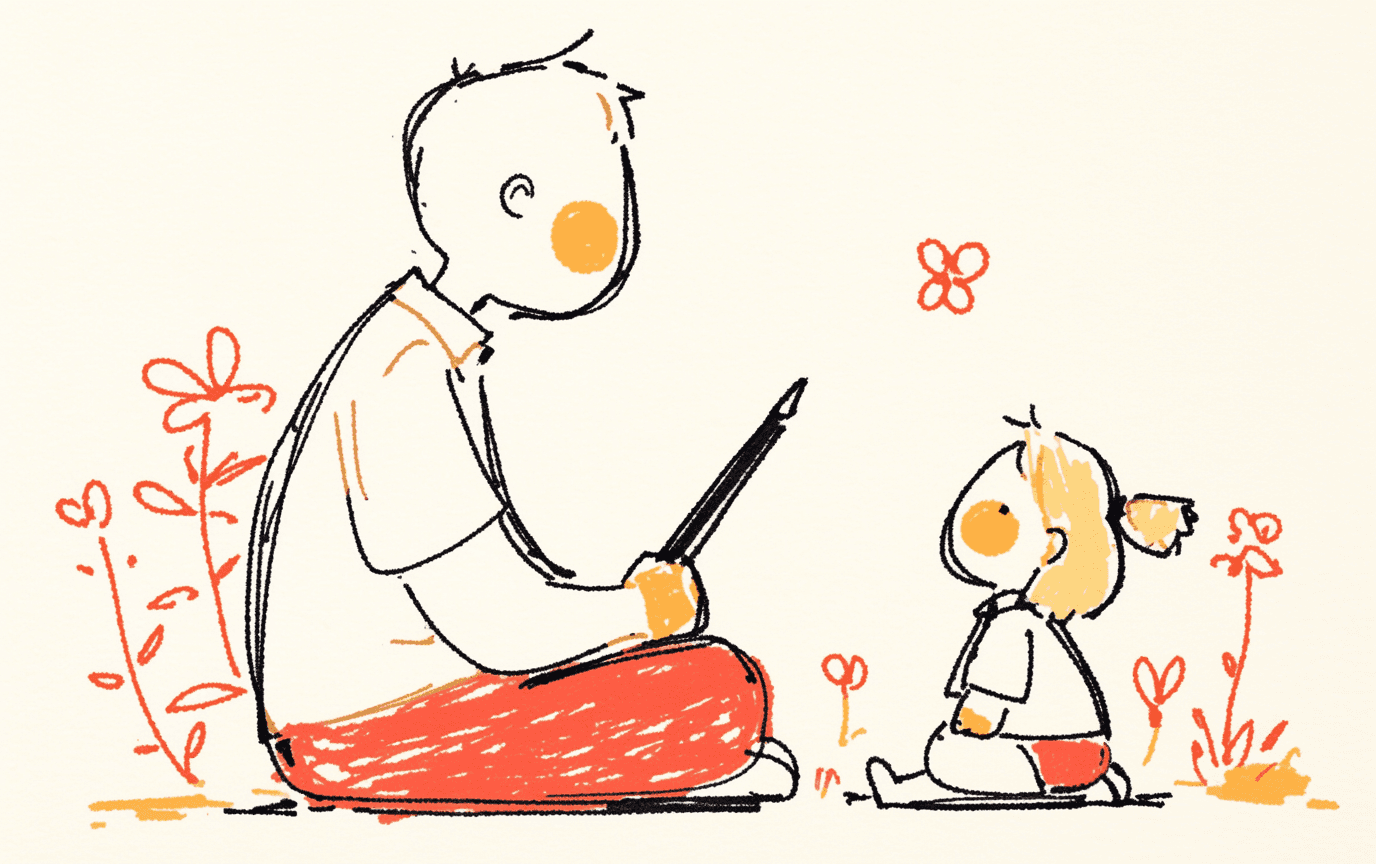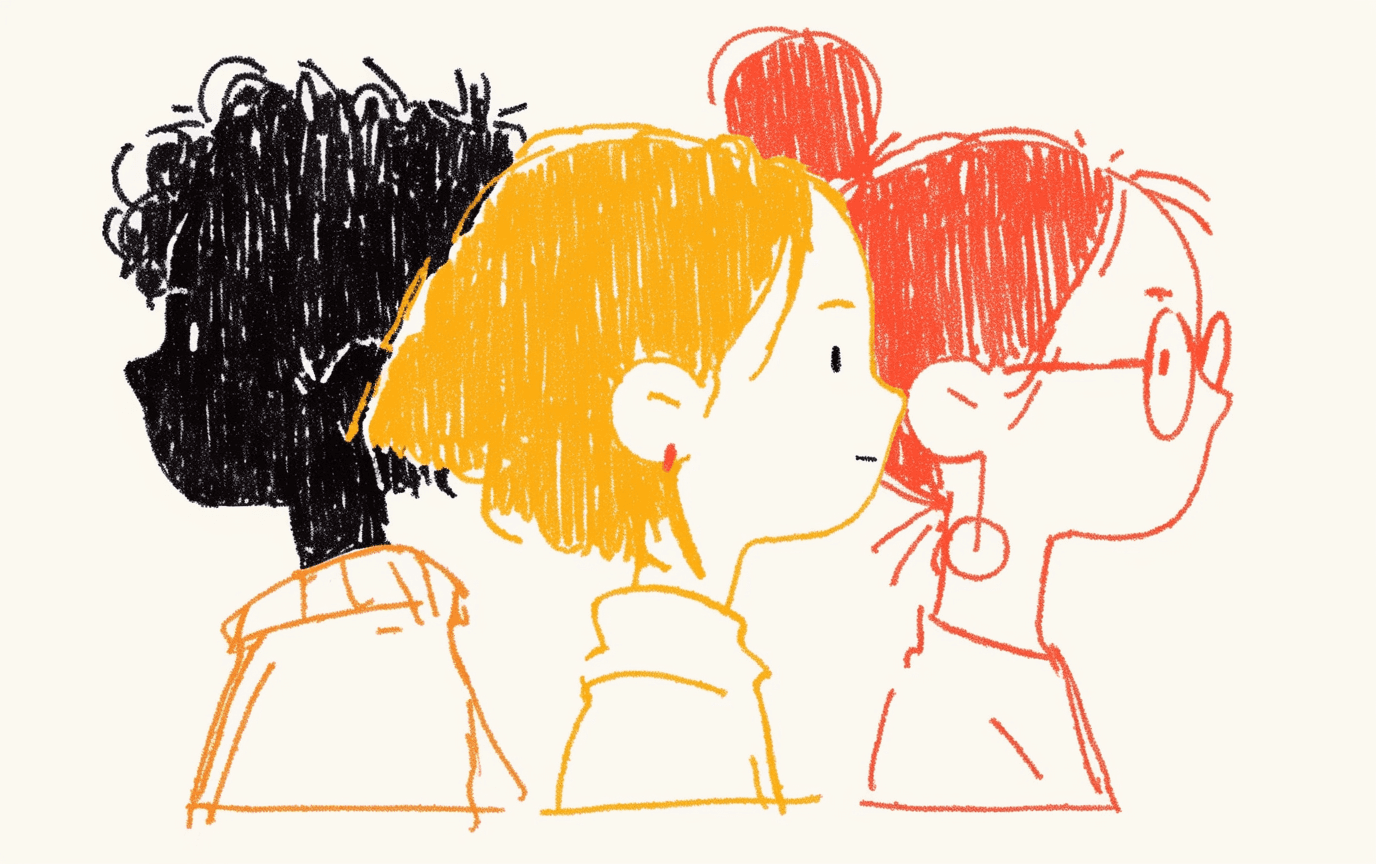The Role of Technology in the Preschool Classroom


Tamar Andrews
8 min read
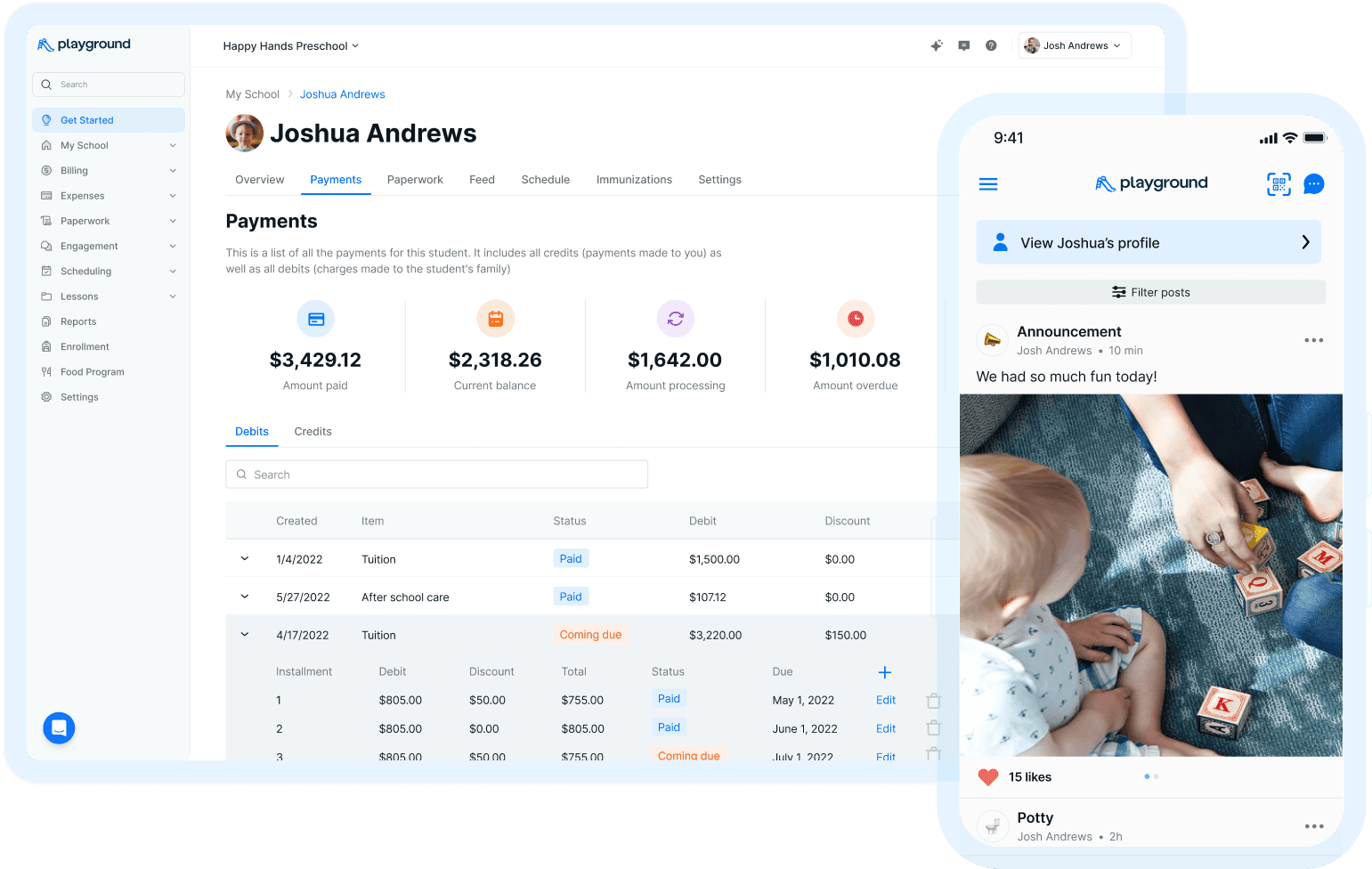
Make your families & teachers happier
All-in-one child care management platform with billing, attendance, registration, communication, payroll, and more!
5.0 Rating

Make your families & teachers happier
All-in-one child care management platform with billing, attendance, registration, communication, payroll, and more!
5.0 Rating
Technology has become an integral part of early childhood education, transforming how teachers engage their students and how children develop foundational skills. But why is technology such a game-changer for preschoolers? Digital tools like educational apps and smartboards are designed to be interactive and fun, making learning feel like play. Plus, they empower teachers to deliver a curriculum that caters to each child’s unique needs and pace.
This is no passing trend. Research shows that technology adoption in early childhood classrooms has been growing rapidly. According to a recent study by the Joan Ganz Cooney Center, 96% of educators believe technology has positively impacted their teaching, with tools like tablets and educational apps becoming staples in many classrooms. Another report from the International Literacy Association reveals that digital tools can boost skills like literacy, math, and problem-solving when used intentionally.
As preschools and daycare centers embrace digital transformation, the question isn’t whether technology belongs in the classroom. It’s how to use it in ways that truly benefit our youngest learners.
Benefits of technology in early childhood education
One of the biggest benefits of using technology in the preschool classroom is its ability to provide personalized learning experiences for every student, which has long been a challenge in American classrooms. With educational apps and digital resources, teachers can tailor lessons to each child’s unique needs and pace, ensuring they get the attention and support they need to learn.
But that’s just the tip of the iceberg. Technology in early childhood classrooms offers a host of other advantages:
Encouraging problem-solving and critical thinking: Many educational apps and games are designed to be interactive and engaging, challenging kids to think critically and creatively as they solve puzzles or navigate tasks.
Boosting early literacy and math skills: Digital tools can introduce foundational concepts like letter recognition, phonics, counting, and shapes in ways that feel more like play than work.
Building digital literacy early: By using technology in meaningful ways, children develop familiarity with tools they’ll encounter throughout their education and future careers.
Promoting collaboration: Activities on tablets or interactive whiteboards often encourage group work, helping kids learn teamwork and communication skills.
Enhancing social-emotional learning: Some apps focus on teaching kids about emotions, empathy, and relationships through stories and interactive activities.
Making learning accessible: For students with different learning needs, technology can offer features like audio instructions, visual aids, or customizable settings to support diverse learners.
Engaging parents: Digital tools can also bridge the gap between home and school, allowing parents to see their child’s progress and reinforce learning outside the classroom.
Technology can turn a preschool classroom into an exciting space that enhances learning and engagement! It’s not about replacing traditional methods; it’s about enhancing them with tools that make learning more dynamic and inclusive.
Digital tools for preschool learning
All kinds of digital tools can be used in the preschool classroom to take learning and support to the next level for young children. Here are a few examples:
Endless Alphabet: This app introduces children to the alphabet and builds their vocabulary through interactive word puzzles and fun animations. Each word is accompanied by playful characters and sound effects, making it an exciting way to learn.
Starfall ABCs: Focused on early literacy skills, this app teaches kids about letters, phonics, and even simple reading through games, songs, and activities. It's perfect for building a strong foundation in reading.
Khan Academy Kids: This comprehensive app covers a wide range of topics, including reading, writing, math, and social-emotional learning. Its colorful design and engaging activities make it a favorite among teachers and parents alike.
Toca Boca Series (e.g., Toca Kitchen, Toca Doctor): These apps encourage creativity and problem-solving by letting kids explore everyday scenarios in imaginative ways. For example, in Toca Kitchen, kids can "cook" meals, experimenting with ingredients and methods.
ABCmouse: Designed as a full early learning curriculum, ABCmouse includes lessons on math, reading, art, and music. Kids progress through levels and earn rewards, keeping them motivated as they learn.
Moose Math: A fun app for teaching math skills, Moose Math introduces concepts like counting, addition, and subtraction through engaging activities and adorable animal characters.
PBS Kids Games: This app features educational games with beloved PBS characters like Daniel Tiger, Elmo, and Curious George, covering topics from science and math to social-emotional learning.
Preschool classroom interactive whiteboards
Interactive whiteboards, or smartboards, are large, touch-sensitive displays that can be connected to a computer and used to present multimedia content in a classroom setting. Teachers who want to encourage technology in early childhood, can use interactive whiteboards to display interactive lessons, videos, and other educational materials, making them a great tool for engaging young learners.
Digital cameras and tablets as preschool tools
Digital cameras and tablets can be used to capture and share images, videos, and other multimedia content with students. This can be a great way for kids to document their learning and share their experiences with others.
Online learning platforms
Many online learning platforms offer a wide range of educational resources for young children. These platforms often include interactive games, videos, and other materials that can be used to support learning in a variety of subject areas.
Educational robots in preschool classrooms
Educational robots are a newer addition to the world of technology in the early childhood education industry, and they can be a lot of fun for young children. These robots are designed to be interactive and engaging, and they can be used to teach kids about a variety of topics, from coding and programming to science and math.
Challenges of using technology in early childhood classrooms
As with any new approach, integrating technology into early childhood classrooms comes with its own set of challenges.
Distraction: Kids are naturally curious, but that curiosity can sometimes lead to distractions when screens are involved. The colors and exciting features of digital tools may pull their focus away from the lesson. Teachers and caretakers should set clear guidelines for technology use and ensure it complements, rather than replaces, traditional learning activities.
Accessibility: Not every child has access to technology or the internet at home, creating a digital divide that could hurt some students. This inequity can make it challenging to make sure all children have equal opportunities to benefit from technology in the classroom.
Tips for effectively implementing technology in early childhood classrooms
To make technology a meaningful and inclusive part of preschool education, educators can try out these strategies:
Create a technology-rich environment: Equip classrooms with age-appropriate devices like interactive whiteboards, tablets, or computers.
Provide training and support: Offer training sessions for teachers, students, and parents to ensure everyone understands how to use the technology effectively.
Collaborate with community organizations: Partner with local libraries, community centers, or nonprofits to provide additional technology resources or shared access for students who lack them at home.
Utilize internet hotspots: Portable hotspots can bridge the gap for students without home internet access, enabling them to stay connected to educational resources when needed.
Set clear boundaries: Establish rules around screen time and emphasize a balance between digital and hands-on activities. And remember—technology should enhance traditional learning methods, not replace them!
Integrating Playground technology to streamline preschool operations
Technology has revolutionized the way preschool classrooms operate, making learning more effective for young children. But its impact doesn’t stop there. Behind every tech-infused classroom is a team of dedicated educators and administrators working to keep everything running smoothly. That’s where tools like Playground come in handy. Playground empowers preschool leaders and staff by simplifying everyday processes. Here are some of the top benefits:
Simplifying enrollment and registration
Paper forms and endless data entry are so yesterday. Playground allows parents to complete registration online, reducing administrative workload and ensuring all information is securely stored in one place. This means staff can spend less time on paperwork and more time supporting children.Efficient billing and payments
Managing tuition and other fees can be a major headache. Playground’s billing features automate payment reminders, track outstanding balances, and provide an easy payment portal for parents.Streamlining attendance tracking
Checking kids in and out can feel chaotic, but Playground simplifies this with digital attendance tracking. Parents can sign their children in with a quick scan or tap, and staff have real-time records of who’s present.Enhancing parent communication
Clear communication between teachers and parents is essential for a child’s success. With Playground, teachers can send updates, photos, and reminders directly to parents through the platform.Paperwork reimagined
Whether it’s meal plans, incident reports, or daily schedules, Playground digitizes and organizes all essential documentation. Teachers can access what they need easily, keeping operations seamless and stress-free.Supporting reporting and compliance
Playground’s reporting tools make it easier to stay compliant with licensing requirements and track key metrics. Whether it’s attendance records or enrollment stats, everything is available at a glance.
Technology in the preschool classroom has transformed early childhood education. Educational apps help kids build problem-solving skills while platforms like Playground simplify enrollment and billing. The right technology can make a meaningful difference for students, teachers, and administrators alike.
Keep in mind as you integrate technology into your learning and administrative strategies, that it’s a tool, not the whole solution. Its value comes from how we use it to complement traditional teaching methods, foster meaningful connections, and create an environment where kids can transform into their unique selves. The future of early education is here and it’s powered by technology!
Technology has become an integral part of early childhood education, transforming how teachers engage their students and how children develop foundational skills. But why is technology such a game-changer for preschoolers? Digital tools like educational apps and smartboards are designed to be interactive and fun, making learning feel like play. Plus, they empower teachers to deliver a curriculum that caters to each child’s unique needs and pace.
This is no passing trend. Research shows that technology adoption in early childhood classrooms has been growing rapidly. According to a recent study by the Joan Ganz Cooney Center, 96% of educators believe technology has positively impacted their teaching, with tools like tablets and educational apps becoming staples in many classrooms. Another report from the International Literacy Association reveals that digital tools can boost skills like literacy, math, and problem-solving when used intentionally.
As preschools and daycare centers embrace digital transformation, the question isn’t whether technology belongs in the classroom. It’s how to use it in ways that truly benefit our youngest learners.
Benefits of technology in early childhood education
One of the biggest benefits of using technology in the preschool classroom is its ability to provide personalized learning experiences for every student, which has long been a challenge in American classrooms. With educational apps and digital resources, teachers can tailor lessons to each child’s unique needs and pace, ensuring they get the attention and support they need to learn.
But that’s just the tip of the iceberg. Technology in early childhood classrooms offers a host of other advantages:
Encouraging problem-solving and critical thinking: Many educational apps and games are designed to be interactive and engaging, challenging kids to think critically and creatively as they solve puzzles or navigate tasks.
Boosting early literacy and math skills: Digital tools can introduce foundational concepts like letter recognition, phonics, counting, and shapes in ways that feel more like play than work.
Building digital literacy early: By using technology in meaningful ways, children develop familiarity with tools they’ll encounter throughout their education and future careers.
Promoting collaboration: Activities on tablets or interactive whiteboards often encourage group work, helping kids learn teamwork and communication skills.
Enhancing social-emotional learning: Some apps focus on teaching kids about emotions, empathy, and relationships through stories and interactive activities.
Making learning accessible: For students with different learning needs, technology can offer features like audio instructions, visual aids, or customizable settings to support diverse learners.
Engaging parents: Digital tools can also bridge the gap between home and school, allowing parents to see their child’s progress and reinforce learning outside the classroom.
Technology can turn a preschool classroom into an exciting space that enhances learning and engagement! It’s not about replacing traditional methods; it’s about enhancing them with tools that make learning more dynamic and inclusive.
Digital tools for preschool learning
All kinds of digital tools can be used in the preschool classroom to take learning and support to the next level for young children. Here are a few examples:
Endless Alphabet: This app introduces children to the alphabet and builds their vocabulary through interactive word puzzles and fun animations. Each word is accompanied by playful characters and sound effects, making it an exciting way to learn.
Starfall ABCs: Focused on early literacy skills, this app teaches kids about letters, phonics, and even simple reading through games, songs, and activities. It's perfect for building a strong foundation in reading.
Khan Academy Kids: This comprehensive app covers a wide range of topics, including reading, writing, math, and social-emotional learning. Its colorful design and engaging activities make it a favorite among teachers and parents alike.
Toca Boca Series (e.g., Toca Kitchen, Toca Doctor): These apps encourage creativity and problem-solving by letting kids explore everyday scenarios in imaginative ways. For example, in Toca Kitchen, kids can "cook" meals, experimenting with ingredients and methods.
ABCmouse: Designed as a full early learning curriculum, ABCmouse includes lessons on math, reading, art, and music. Kids progress through levels and earn rewards, keeping them motivated as they learn.
Moose Math: A fun app for teaching math skills, Moose Math introduces concepts like counting, addition, and subtraction through engaging activities and adorable animal characters.
PBS Kids Games: This app features educational games with beloved PBS characters like Daniel Tiger, Elmo, and Curious George, covering topics from science and math to social-emotional learning.
Preschool classroom interactive whiteboards
Interactive whiteboards, or smartboards, are large, touch-sensitive displays that can be connected to a computer and used to present multimedia content in a classroom setting. Teachers who want to encourage technology in early childhood, can use interactive whiteboards to display interactive lessons, videos, and other educational materials, making them a great tool for engaging young learners.
Digital cameras and tablets as preschool tools
Digital cameras and tablets can be used to capture and share images, videos, and other multimedia content with students. This can be a great way for kids to document their learning and share their experiences with others.
Online learning platforms
Many online learning platforms offer a wide range of educational resources for young children. These platforms often include interactive games, videos, and other materials that can be used to support learning in a variety of subject areas.
Educational robots in preschool classrooms
Educational robots are a newer addition to the world of technology in the early childhood education industry, and they can be a lot of fun for young children. These robots are designed to be interactive and engaging, and they can be used to teach kids about a variety of topics, from coding and programming to science and math.
Challenges of using technology in early childhood classrooms
As with any new approach, integrating technology into early childhood classrooms comes with its own set of challenges.
Distraction: Kids are naturally curious, but that curiosity can sometimes lead to distractions when screens are involved. The colors and exciting features of digital tools may pull their focus away from the lesson. Teachers and caretakers should set clear guidelines for technology use and ensure it complements, rather than replaces, traditional learning activities.
Accessibility: Not every child has access to technology or the internet at home, creating a digital divide that could hurt some students. This inequity can make it challenging to make sure all children have equal opportunities to benefit from technology in the classroom.
Tips for effectively implementing technology in early childhood classrooms
To make technology a meaningful and inclusive part of preschool education, educators can try out these strategies:
Create a technology-rich environment: Equip classrooms with age-appropriate devices like interactive whiteboards, tablets, or computers.
Provide training and support: Offer training sessions for teachers, students, and parents to ensure everyone understands how to use the technology effectively.
Collaborate with community organizations: Partner with local libraries, community centers, or nonprofits to provide additional technology resources or shared access for students who lack them at home.
Utilize internet hotspots: Portable hotspots can bridge the gap for students without home internet access, enabling them to stay connected to educational resources when needed.
Set clear boundaries: Establish rules around screen time and emphasize a balance between digital and hands-on activities. And remember—technology should enhance traditional learning methods, not replace them!
Integrating Playground technology to streamline preschool operations
Technology has revolutionized the way preschool classrooms operate, making learning more effective for young children. But its impact doesn’t stop there. Behind every tech-infused classroom is a team of dedicated educators and administrators working to keep everything running smoothly. That’s where tools like Playground come in handy. Playground empowers preschool leaders and staff by simplifying everyday processes. Here are some of the top benefits:
Simplifying enrollment and registration
Paper forms and endless data entry are so yesterday. Playground allows parents to complete registration online, reducing administrative workload and ensuring all information is securely stored in one place. This means staff can spend less time on paperwork and more time supporting children.Efficient billing and payments
Managing tuition and other fees can be a major headache. Playground’s billing features automate payment reminders, track outstanding balances, and provide an easy payment portal for parents.Streamlining attendance tracking
Checking kids in and out can feel chaotic, but Playground simplifies this with digital attendance tracking. Parents can sign their children in with a quick scan or tap, and staff have real-time records of who’s present.Enhancing parent communication
Clear communication between teachers and parents is essential for a child’s success. With Playground, teachers can send updates, photos, and reminders directly to parents through the platform.Paperwork reimagined
Whether it’s meal plans, incident reports, or daily schedules, Playground digitizes and organizes all essential documentation. Teachers can access what they need easily, keeping operations seamless and stress-free.Supporting reporting and compliance
Playground’s reporting tools make it easier to stay compliant with licensing requirements and track key metrics. Whether it’s attendance records or enrollment stats, everything is available at a glance.
Technology in the preschool classroom has transformed early childhood education. Educational apps help kids build problem-solving skills while platforms like Playground simplify enrollment and billing. The right technology can make a meaningful difference for students, teachers, and administrators alike.
Keep in mind as you integrate technology into your learning and administrative strategies, that it’s a tool, not the whole solution. Its value comes from how we use it to complement traditional teaching methods, foster meaningful connections, and create an environment where kids can transform into their unique selves. The future of early education is here and it’s powered by technology!
Technology has become an integral part of early childhood education, transforming how teachers engage their students and how children develop foundational skills. But why is technology such a game-changer for preschoolers? Digital tools like educational apps and smartboards are designed to be interactive and fun, making learning feel like play. Plus, they empower teachers to deliver a curriculum that caters to each child’s unique needs and pace.
This is no passing trend. Research shows that technology adoption in early childhood classrooms has been growing rapidly. According to a recent study by the Joan Ganz Cooney Center, 96% of educators believe technology has positively impacted their teaching, with tools like tablets and educational apps becoming staples in many classrooms. Another report from the International Literacy Association reveals that digital tools can boost skills like literacy, math, and problem-solving when used intentionally.
As preschools and daycare centers embrace digital transformation, the question isn’t whether technology belongs in the classroom. It’s how to use it in ways that truly benefit our youngest learners.
Benefits of technology in early childhood education
One of the biggest benefits of using technology in the preschool classroom is its ability to provide personalized learning experiences for every student, which has long been a challenge in American classrooms. With educational apps and digital resources, teachers can tailor lessons to each child’s unique needs and pace, ensuring they get the attention and support they need to learn.
But that’s just the tip of the iceberg. Technology in early childhood classrooms offers a host of other advantages:
Encouraging problem-solving and critical thinking: Many educational apps and games are designed to be interactive and engaging, challenging kids to think critically and creatively as they solve puzzles or navigate tasks.
Boosting early literacy and math skills: Digital tools can introduce foundational concepts like letter recognition, phonics, counting, and shapes in ways that feel more like play than work.
Building digital literacy early: By using technology in meaningful ways, children develop familiarity with tools they’ll encounter throughout their education and future careers.
Promoting collaboration: Activities on tablets or interactive whiteboards often encourage group work, helping kids learn teamwork and communication skills.
Enhancing social-emotional learning: Some apps focus on teaching kids about emotions, empathy, and relationships through stories and interactive activities.
Making learning accessible: For students with different learning needs, technology can offer features like audio instructions, visual aids, or customizable settings to support diverse learners.
Engaging parents: Digital tools can also bridge the gap between home and school, allowing parents to see their child’s progress and reinforce learning outside the classroom.
Technology can turn a preschool classroom into an exciting space that enhances learning and engagement! It’s not about replacing traditional methods; it’s about enhancing them with tools that make learning more dynamic and inclusive.
Digital tools for preschool learning
All kinds of digital tools can be used in the preschool classroom to take learning and support to the next level for young children. Here are a few examples:
Endless Alphabet: This app introduces children to the alphabet and builds their vocabulary through interactive word puzzles and fun animations. Each word is accompanied by playful characters and sound effects, making it an exciting way to learn.
Starfall ABCs: Focused on early literacy skills, this app teaches kids about letters, phonics, and even simple reading through games, songs, and activities. It's perfect for building a strong foundation in reading.
Khan Academy Kids: This comprehensive app covers a wide range of topics, including reading, writing, math, and social-emotional learning. Its colorful design and engaging activities make it a favorite among teachers and parents alike.
Toca Boca Series (e.g., Toca Kitchen, Toca Doctor): These apps encourage creativity and problem-solving by letting kids explore everyday scenarios in imaginative ways. For example, in Toca Kitchen, kids can "cook" meals, experimenting with ingredients and methods.
ABCmouse: Designed as a full early learning curriculum, ABCmouse includes lessons on math, reading, art, and music. Kids progress through levels and earn rewards, keeping them motivated as they learn.
Moose Math: A fun app for teaching math skills, Moose Math introduces concepts like counting, addition, and subtraction through engaging activities and adorable animal characters.
PBS Kids Games: This app features educational games with beloved PBS characters like Daniel Tiger, Elmo, and Curious George, covering topics from science and math to social-emotional learning.
Preschool classroom interactive whiteboards
Interactive whiteboards, or smartboards, are large, touch-sensitive displays that can be connected to a computer and used to present multimedia content in a classroom setting. Teachers who want to encourage technology in early childhood, can use interactive whiteboards to display interactive lessons, videos, and other educational materials, making them a great tool for engaging young learners.
Digital cameras and tablets as preschool tools
Digital cameras and tablets can be used to capture and share images, videos, and other multimedia content with students. This can be a great way for kids to document their learning and share their experiences with others.
Online learning platforms
Many online learning platforms offer a wide range of educational resources for young children. These platforms often include interactive games, videos, and other materials that can be used to support learning in a variety of subject areas.
Educational robots in preschool classrooms
Educational robots are a newer addition to the world of technology in the early childhood education industry, and they can be a lot of fun for young children. These robots are designed to be interactive and engaging, and they can be used to teach kids about a variety of topics, from coding and programming to science and math.
Challenges of using technology in early childhood classrooms
As with any new approach, integrating technology into early childhood classrooms comes with its own set of challenges.
Distraction: Kids are naturally curious, but that curiosity can sometimes lead to distractions when screens are involved. The colors and exciting features of digital tools may pull their focus away from the lesson. Teachers and caretakers should set clear guidelines for technology use and ensure it complements, rather than replaces, traditional learning activities.
Accessibility: Not every child has access to technology or the internet at home, creating a digital divide that could hurt some students. This inequity can make it challenging to make sure all children have equal opportunities to benefit from technology in the classroom.
Tips for effectively implementing technology in early childhood classrooms
To make technology a meaningful and inclusive part of preschool education, educators can try out these strategies:
Create a technology-rich environment: Equip classrooms with age-appropriate devices like interactive whiteboards, tablets, or computers.
Provide training and support: Offer training sessions for teachers, students, and parents to ensure everyone understands how to use the technology effectively.
Collaborate with community organizations: Partner with local libraries, community centers, or nonprofits to provide additional technology resources or shared access for students who lack them at home.
Utilize internet hotspots: Portable hotspots can bridge the gap for students without home internet access, enabling them to stay connected to educational resources when needed.
Set clear boundaries: Establish rules around screen time and emphasize a balance between digital and hands-on activities. And remember—technology should enhance traditional learning methods, not replace them!
Integrating Playground technology to streamline preschool operations
Technology has revolutionized the way preschool classrooms operate, making learning more effective for young children. But its impact doesn’t stop there. Behind every tech-infused classroom is a team of dedicated educators and administrators working to keep everything running smoothly. That’s where tools like Playground come in handy. Playground empowers preschool leaders and staff by simplifying everyday processes. Here are some of the top benefits:
Simplifying enrollment and registration
Paper forms and endless data entry are so yesterday. Playground allows parents to complete registration online, reducing administrative workload and ensuring all information is securely stored in one place. This means staff can spend less time on paperwork and more time supporting children.Efficient billing and payments
Managing tuition and other fees can be a major headache. Playground’s billing features automate payment reminders, track outstanding balances, and provide an easy payment portal for parents.Streamlining attendance tracking
Checking kids in and out can feel chaotic, but Playground simplifies this with digital attendance tracking. Parents can sign their children in with a quick scan or tap, and staff have real-time records of who’s present.Enhancing parent communication
Clear communication between teachers and parents is essential for a child’s success. With Playground, teachers can send updates, photos, and reminders directly to parents through the platform.Paperwork reimagined
Whether it’s meal plans, incident reports, or daily schedules, Playground digitizes and organizes all essential documentation. Teachers can access what they need easily, keeping operations seamless and stress-free.Supporting reporting and compliance
Playground’s reporting tools make it easier to stay compliant with licensing requirements and track key metrics. Whether it’s attendance records or enrollment stats, everything is available at a glance.
Technology in the preschool classroom has transformed early childhood education. Educational apps help kids build problem-solving skills while platforms like Playground simplify enrollment and billing. The right technology can make a meaningful difference for students, teachers, and administrators alike.
Keep in mind as you integrate technology into your learning and administrative strategies, that it’s a tool, not the whole solution. Its value comes from how we use it to complement traditional teaching methods, foster meaningful connections, and create an environment where kids can transform into their unique selves. The future of early education is here and it’s powered by technology!
Playground is the only app directors need to run their early child care center. Playground manages marketing, registration, billing, attendance, communication, paperwork, payroll, and more for child care programs. 300,000+ directors, teachers, and families trust Playground to simplify their lives.
Learn more by scheduling a free personalized demo.
See what Playground can do for you
Learn how our top-rated child care management platform can make your families & teachers happier while lowering your costs
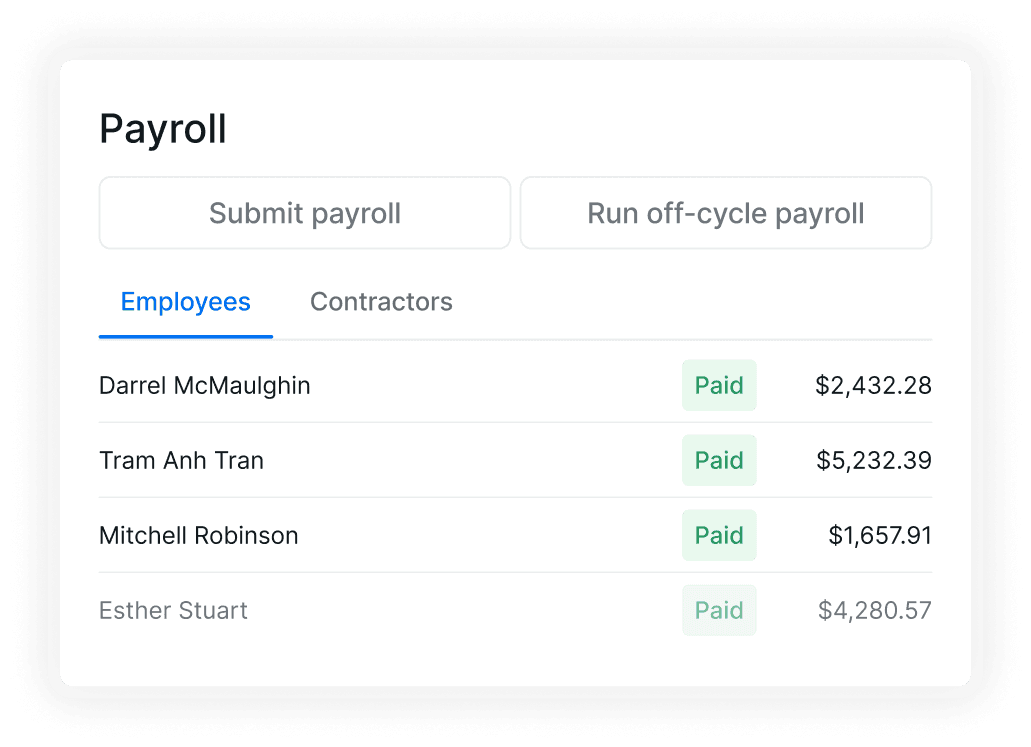


Related articles
Stay in the loop.
Sign up for Playground updates.
Stay in the loop.
Sign up for Playground updates.
Stay in the loop.
Sign up for the updates.
© 2025 Carline Inc. All rights reserved.
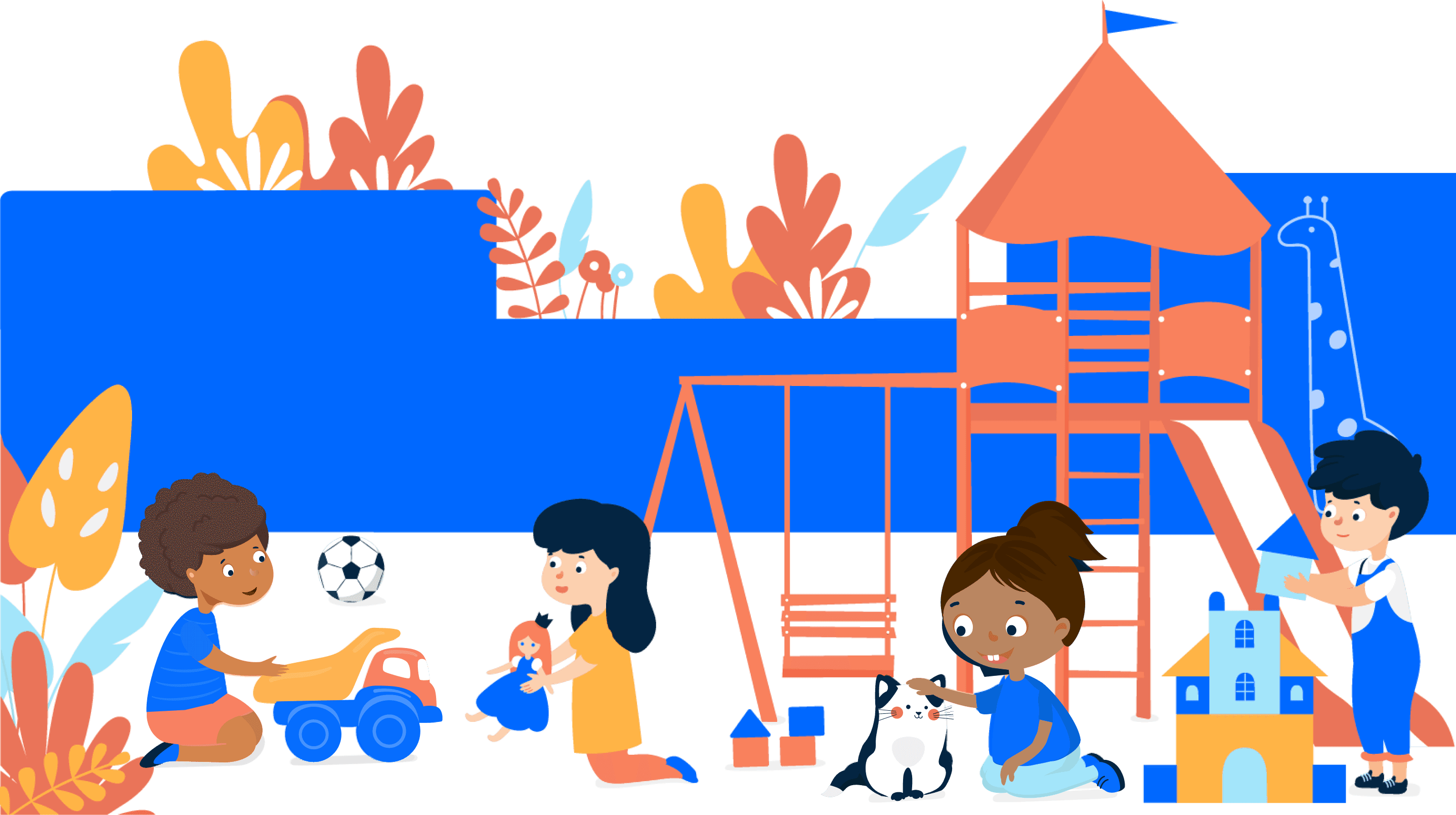
© 2025 Carline Inc. All rights reserved.

© 2025 Carline Inc. All rights reserved.

The Role of Technology in the Preschool Classroom
Published Jan 23, 2025
|
